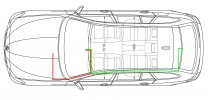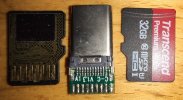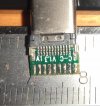Edsel
New Member
I'm under the impression that current Dash Cameras either last or reach obsolescence after a few years at the most.
My issue is the wiring involved, after going through all the trouble of hiding them in the vehicle's pillars, pulling the headliner, and perhaps tucking them under various trim panels - that's a lot of work for a novice.
For instance, if I were to use a dual - channel Street Guardian (micro USB power, micro USB video from front to back) now, and a dual channel Blackvue (small plug for power, coaxial from front to back) three years later - the wiring would have to be replaced.
It would seem to make more sense to install some really "nice, permanent wiring" with plugs on both ends; in the event that the dashcam needs to be replaced, all one needs to do is splice the connectors on the newer dashcam, attach new plugs compatible with those on the power and / or video cable, and click them into place.
That way, the "nice, permanent wiring" stays - but the dashcams can be replaced without much hassle (apart from soldering in new plugs and cleaning up the adhesive).
Has anybody taken this approach, and do you have pictures of your setup?
What would you recommend?
My issue is the wiring involved, after going through all the trouble of hiding them in the vehicle's pillars, pulling the headliner, and perhaps tucking them under various trim panels - that's a lot of work for a novice.
For instance, if I were to use a dual - channel Street Guardian (micro USB power, micro USB video from front to back) now, and a dual channel Blackvue (small plug for power, coaxial from front to back) three years later - the wiring would have to be replaced.
It would seem to make more sense to install some really "nice, permanent wiring" with plugs on both ends; in the event that the dashcam needs to be replaced, all one needs to do is splice the connectors on the newer dashcam, attach new plugs compatible with those on the power and / or video cable, and click them into place.
That way, the "nice, permanent wiring" stays - but the dashcams can be replaced without much hassle (apart from soldering in new plugs and cleaning up the adhesive).
Has anybody taken this approach, and do you have pictures of your setup?
What would you recommend?



